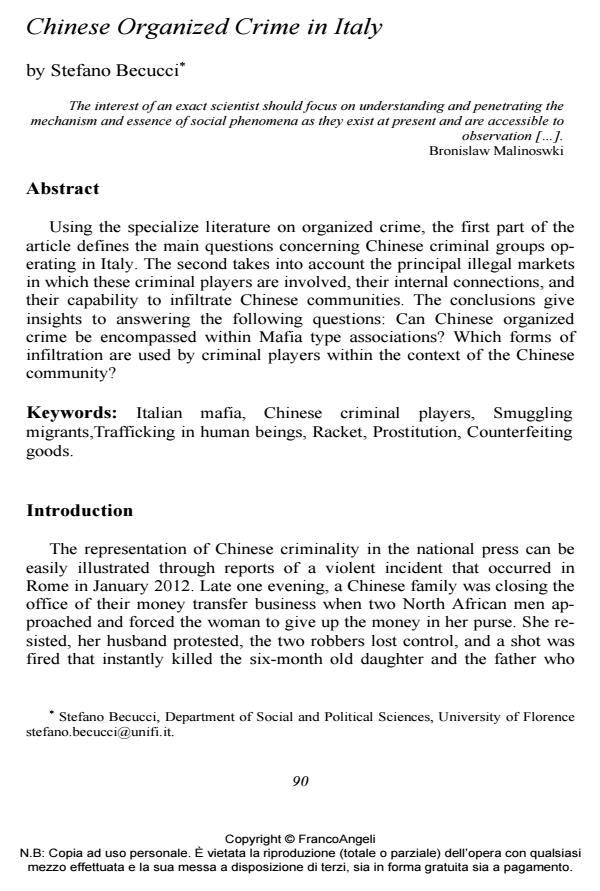Chinese Organized Crime in Italy
Titolo Rivista SICUREZZA E SCIENZE SOCIALI
Autori/Curatori Stefano Becucci
Anno di pubblicazione 2014 Fascicolo 2013/3EN
Lingua Inglese Numero pagine 21 P. 90-110 Dimensione file 637 KB
DOI 10.3280/SISS2013-003007EN
Il DOI è il codice a barre della proprietà intellettuale: per saperne di più
clicca qui
Qui sotto puoi vedere in anteprima la prima pagina di questo articolo.
Se questo articolo ti interessa, lo puoi acquistare (e scaricare in formato pdf) seguendo le facili indicazioni per acquistare il download credit. Acquista Download Credits per scaricare questo Articolo in formato PDF

FrancoAngeli è membro della Publishers International Linking Association, Inc (PILA)associazione indipendente e non profit per facilitare (attraverso i servizi tecnologici implementati da CrossRef.org) l’accesso degli studiosi ai contenuti digitali nelle pubblicazioni professionali e scientifiche
Using the specialize literature on organized crime, the first part of the article defines the main questions concerning Chinese criminal groups operating in Italy. The second takes into account the principal illegal markets in which these criminal players are involved, their internal connections, and their capability to infiltrate Chinese communities. The conclusions give insights to answering the following questions: Can Chinese organized crime be encompassed within Mafia type associations? Which forms of infiltration are used by criminal players within the context of the Chinese community?
Parole chiave:Italian mafia, Chinese criminal players, Smuggling migrants,Trafficking in human beings, Racket, Prostitution, Counterfeiting goods.
Stefano Becucci, Chinese Organized Crime in Italy in "SICUREZZA E SCIENZE SOCIALI" 3EN/2013, pp 90-110, DOI: 10.3280/SISS2013-003007EN